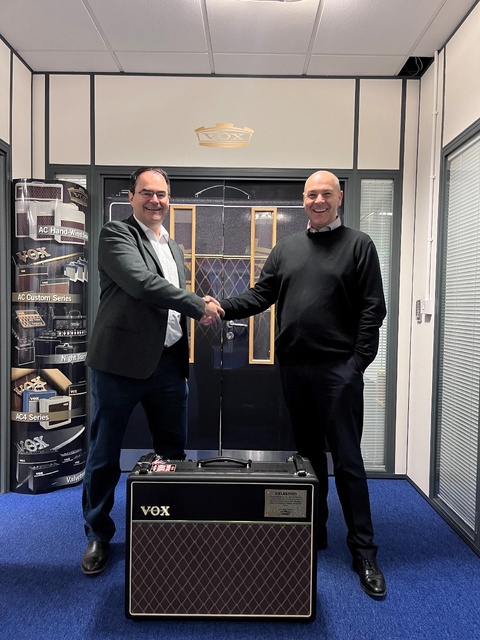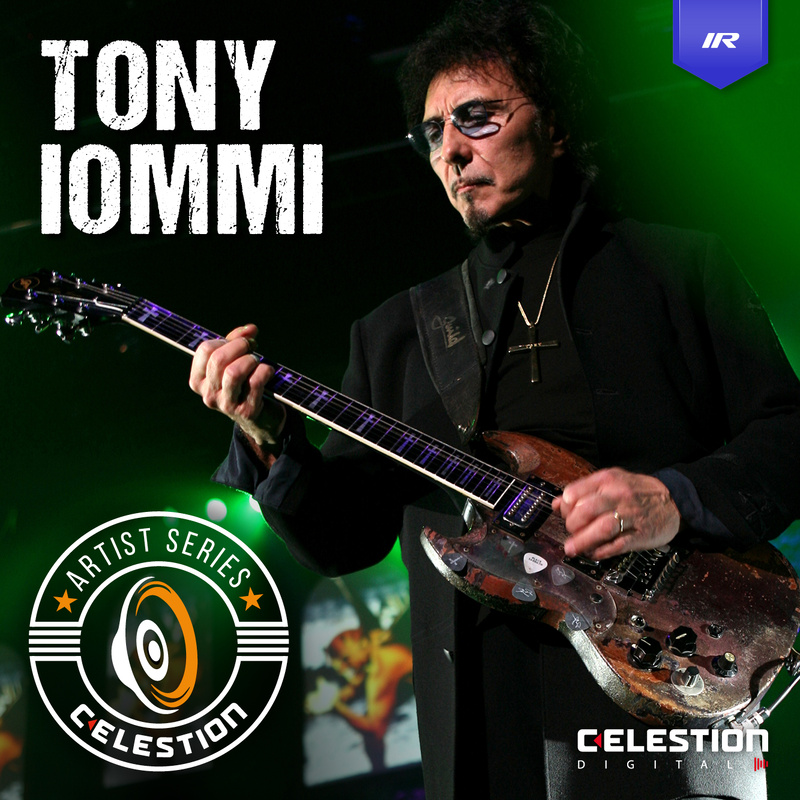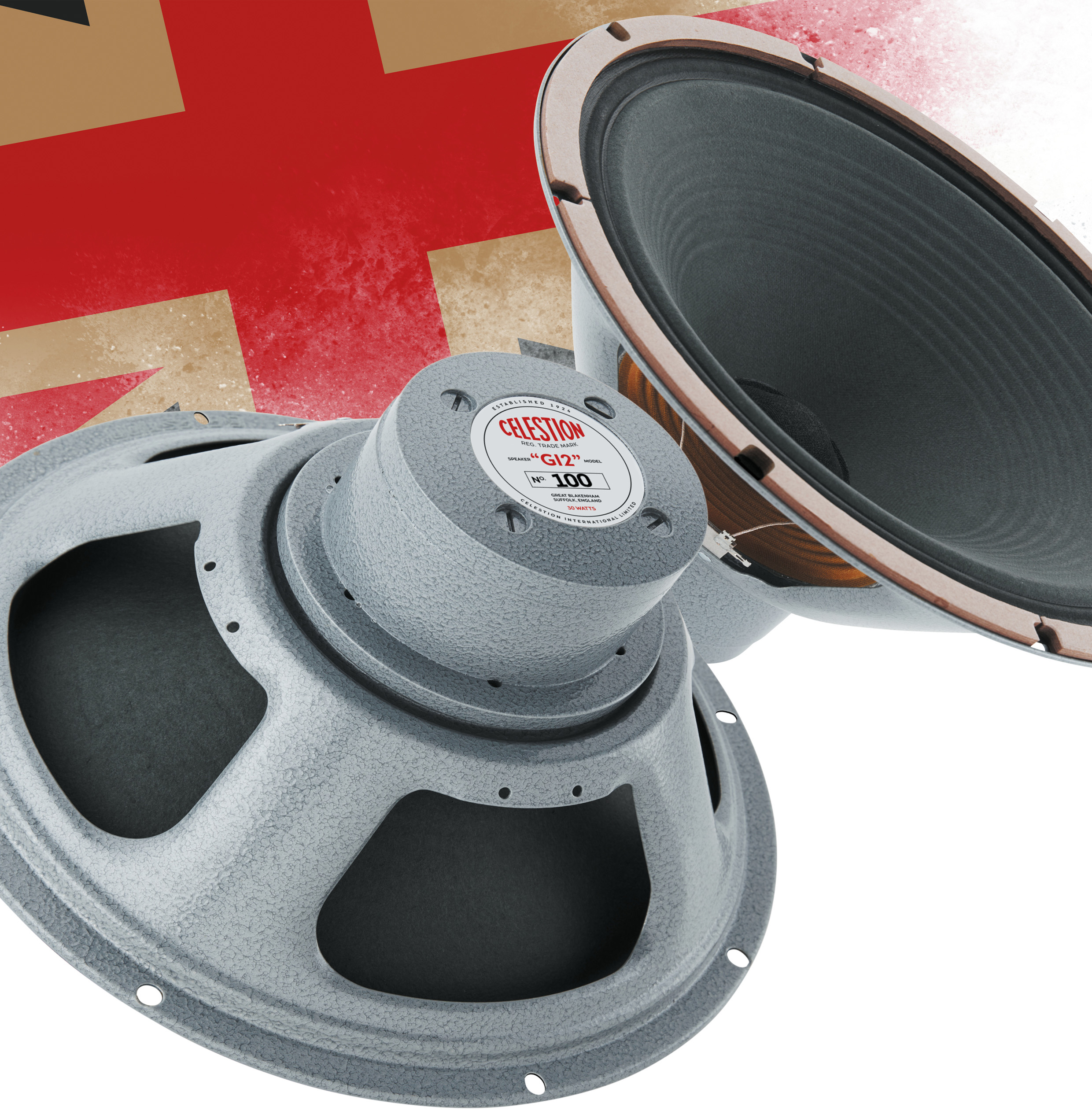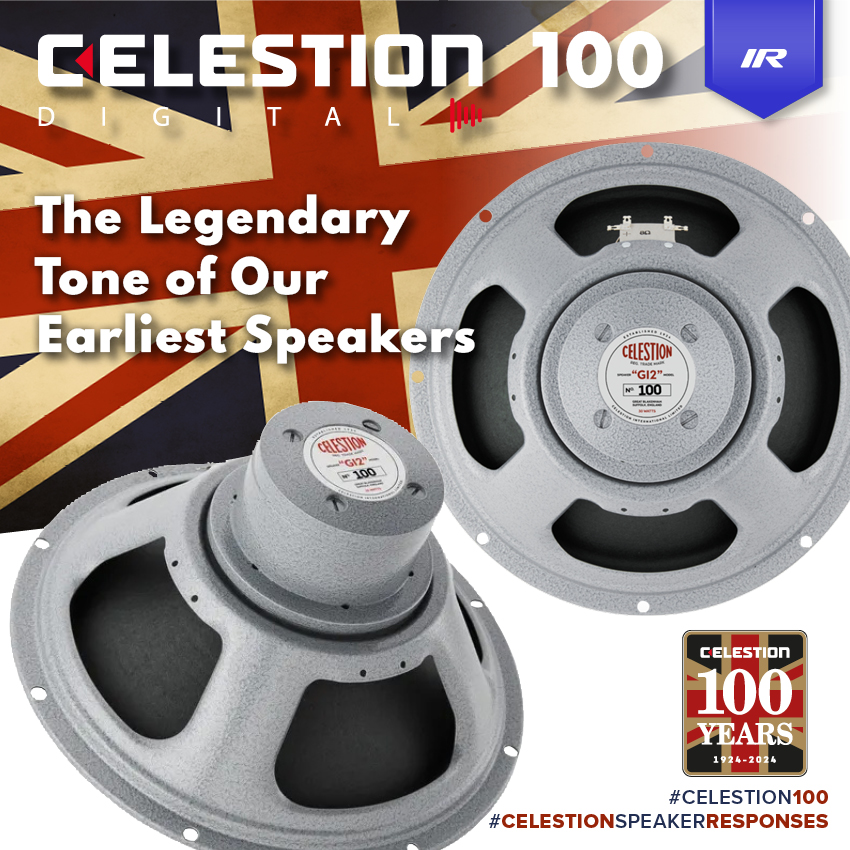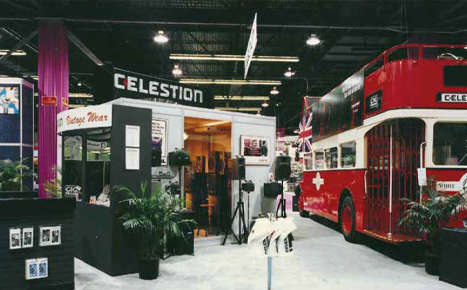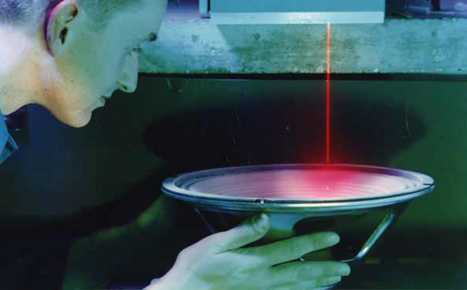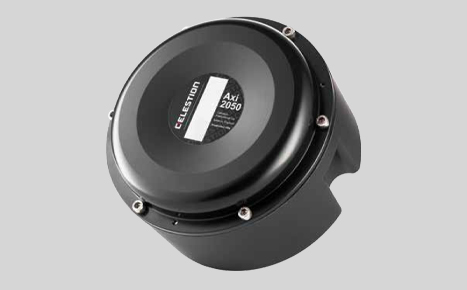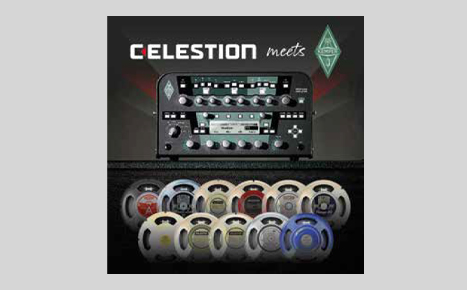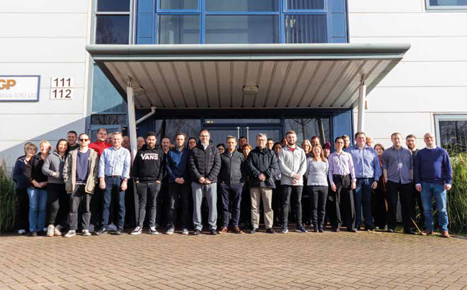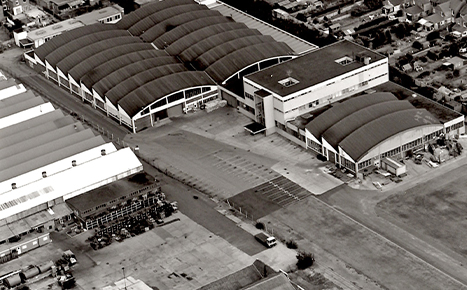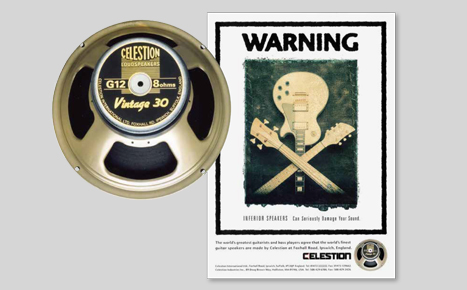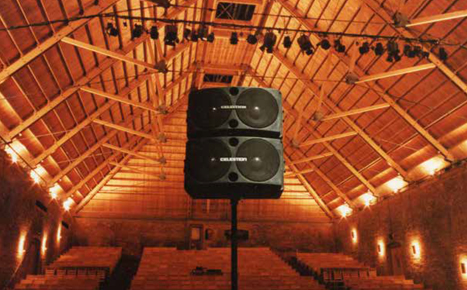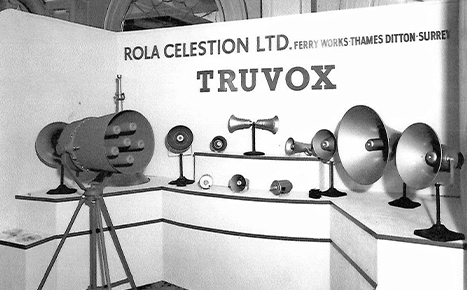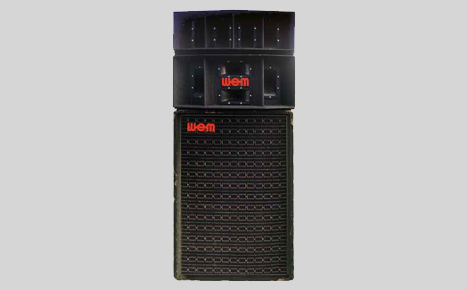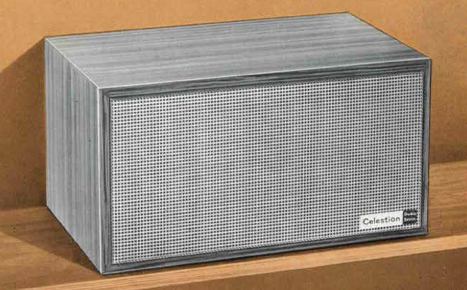
Over half a century from its original filming, Pink Floyd’s iconic concert film, Live at Pompeii, has been digitally re-mastered in 4K with a new high-resolution, Dolby Atmos audio mix by Steven Wilson. Thanks to the meticulous restoration efforts of author and audio historian, Chris Hewitt of CH Vintage Audio, a once in a lifetime opportunity arose for attendees of the world premiere screening to experience the film’s soundtrack through Pink Floyd’s original analogue PA system used during their 1971 performance in the ancient Roman Amphitheatre. The WEM PA system, groundbreaking for its time, features period-authentic Celestion G12, G10, and MH1000 drivers.
Before we get into Live at Pompeii, tell us about your background. How did you get into audio?
I started listening to rock albums in grammar school at about 14 years old. I grew out my hair and they kicked me out, so at age 16 I started attending college in Rochdale, which is just outside of Manchester. I didn’t go to many lectures. I got involved in the student union and found my calling putting gigs on. I spent most of my time promoting bands, going on student demonstrations, and going to music festivals. The next thing you know, I found myself working as a road manager and sound engineer. Before I turned 17, I worked for my first festival in England with the Grateful Dead, and now I’m about to turn 71 and still doing it.
Today I own CH Vintage Audio. We have one of the largest collections of 1960s and 1970s sound equipment from brands like WEM, Vox, HH, Marshall, Shure, Martin, Fender, Music Man, Selmer and many others. We provide everything from PAs to vintage mixing desks, tape machines, rack effects, microphones, vintage radios and more. We rent these items out for film, tv, music video and recording sessions.
Who are some of the other bands that you worked with?
I did a very early Motörhead tour. This was back when Lemmy had no money and was always asking to borrow things off people. Everyone called him “Lemmy Fiver.” He was true to his name and that’s where it came from in the first place.
When the punk thing came along, I worked with the Sex Pistols, the Stranglers, the Adverts, Chelsea, a band that featured Billy Idol on guitar, the Damned, and the Dickies when they came over from America … just about everybody at the end of the prog rock era and the start of the punk era.
Now can you tell us about Pink Floyd and your relationship with the band and their music?
I think the first time I saw Pink Floyd was about 1969 at the Free Trade Hall in Manchester. The show started with the stage in absolute darkness. They had a WEM PA and all you could see in the dim light was the little orange glow of the UV paint on WEM badges on the speaker cabinets. They also had a couple of H&H amplifiers which had green luminescent panels on them.
The sound coming from the stage was of someone frying bacon and eggs and pouring milk on cornflakes. The first five or ten minutes of the show was actually the road crew, cooking and eating breakfast on the stage in darkness…then the band came on stage performing the track, Alan’s Psychedelic Breakfast. Sounds were panning all around the room, I was blown away.
After the show I bought their album Ummagumma. There’s a picture on the back of the record sleeve taken at Biggin Hill Airfield, just outside South London, where the road crew, their van, and all their gear is laid out on the tarmac. Apparently, it was inspired by the way that the U.S. Navy lay out their equipment on the flight deck of an aircraft carrier when they do a display. Ever since, it was my dream to be able to take a picture like that.
About five years later, it was 1975, I’d just got back from watching Pink Floyd at Knebworth. We had a van that we’d hired to go to the show and I thought “today’s a nice sunny afternoon, we’ll just grab all my PA gear and set it up on this car park and laid out in the same way as Ummagumma. The caretaker of the car park came out panicking because he thought we were going to hold an illegal concert, but obviously we were just doing a photo shoot. It all started from that point, but never did I imagine where it would end up.
That’s a great segue to Live at Pompeii. Tell us about your inspiration to pair Pink Floyd’s original concert PA with the film.
I’d written four books on the history of live sound and Pink Floyd features prominently within them. We did a Hi-Fi show last year and were playing Floyd music through the Dark Side of the Moon PA and mixing desk. A guy approached me who had the books and asked if I still owned the Pompeii PA. He collects and restores vintage cinema equipment and told me he had a friend who owned a vintage cinema. He suggested that it might be cool if they tried to acquire an original cut of the film and then we could bring everything together.
This past February, I was in Abbey Road, Studio 2, filming a reinstallation of some 60s Beatles gear that I owned, when he rang me and said, “We may have found the 35mm film.” That was exciting, but then, two weeks later, he rang again to tell me that Stephen Wilson from Porcupine Tree had just remixed the Pompeii soundtrack, and it was finally coming out as an album. And he asked, “Do you want to use Pink Floyd’s actual sound system at the world premiere?” And that’s just how it happened.
How did you come to acquire the PA?
I started off by buying six WEM Audio Masters that belonged to Pink Floyd, five working and one non-working. Once you start to own a little bit of Pink Floyd gear, other people come out of the woodwork and say “I’ve got this. I’ve got that. Do you want this?” It just grew from there.
The problem now is I’ve got people offering me stuff that was used on the Division Bell tour that’s been stored in a warehouse for 30 years and asking for 100 grand because it was used by Pink Floyd once! [laughs]. Those are just a collection of wooden boxes with speakers in them, where on the other hand their PAs for Pompeii and the Dark Side of the Moon were unique.
What Pink Floyd was doing with live sound back then was groundbreaking, but as time progressed, the PAs that they used were great, but became fairly standard technology for the time. I’m just talking about their PAs here. Their concerts, whether it’s Pink Floyd, Roger Waters, David Gilmour, or Nick Mason, always push the boundaries and always will.
Can you tell me specifics about the PA?
The Live at Pompeii PA was created by WEM, Watkins Electric Music, based in the U.K. WEM was one of the first companies to develop a product line dedicated to large scale concert sound reinforcement. One of the hallmarks of the WEM sound, and this PA was no different, was their choice of Celestion drivers for many of their models.
The Pompeii PA is specifically configured with each side (left and right stacks) comprised of 10 SL100 slave amps, six WEM 4 x12 PA columns with Celestion and Goodmans 12in speakers, two WEM 2 x 12 PA columns with Celestion 12in, a WEM Festival stack consisting of 2 x15in Celestion bass unit, 4 x 12in Celestion lower mid, 6 x10in Celestion cone speaker upper mid horns. Additional pressure unit horns cabinets comprised a four-way Celestion MH1000 and a three-way vertical MH1000 horn box, plus additional Vitavox 15 cell multicell horns.
The Celestion 12in and 10in cone speakers used were new designs, G12s and G10s, that were built using different cones and suspensions than the speakers that Celestion had previously been making for guitar amps. The MH1000 was a midrange compression driver developed by Les Ward.
Some of the components needed repair, can you talk about the restoration?
With the Pompeii PA, it’s all the actual speakers. Some Celestion 10s in the festival stats and the 12-inch Celestion G12s in the columns were blown. I just used off-the-shelf components. I’ve got quite a lot of Celestion drivers, even rare ones, some going back to the pre-ROLA time. We re-coned the speakers and were ready to go.
The mixing desk was more involved. We had to recreate it because it had been destroyed and we were fortunate to get Andy Bereza involved. He designed the original desk for Pink Floyd and later went on to found Allen & Heath. Andy still had all the original measurements and schematics for the mixer. Originally, we made a replica “dummy” mixing desk with 28-channels, but only two working ones. When Allen & Heath caught wind of what we’d done, they were so impressed, they offered to finish the job and turn it into a fully featured, working analogue desk with all the same components.
So, even though the original mixer got destroyed, it’s basically the same mixer that was used for Live at Pompeii and the Dark Side of the Moon tours, all the way up to the Wish You Were Here tour when it was retired.
Can you tell us what made this PA special?
Let’s start with the sound. We took the Pompeii PA into the cinema and their audio guy at first just wanted to give us a stereo feed and told us not to “play it too loud,” like he thought what we were doing was just a gimmick or a novelty. He went on to talk about his “state-of-the-art Dolby Atmos system, with fantastic sub-bass units, a digital desk, digital amplifiers, and racks of processors…” I listened and then politely asked “When I’ve plugged mine in will you at least hear it to see how it sounds?” Guess what? As soon as we turned the original Pompeii PA on, he changed his tune and said “Oh! We won’t use much of the cinema sound tonight other than for the surround channels. Your analogue PA sounds so much better.”
Technically, the special thing about the Pompeii system is that all the speakers are running full range. There are no electronic crossovers, because for the most part, they hadn’t been invented yet. Crossovers didn’t come into the mix until the Dark Side of The Moon Tour. We take a stereo feed from the soundtrack and everything on the same channel gets the same signal. The only thing approaching a crossover on the entire system are two 2.o uf capacitors on the positive leg of the cable on the horn drivers. Everything else, the 15s, 12s, and 10s, even the amps, all get the same signal.
The other thing I think that made the Live at Pompeii PA and WEM speakers in general are the fact that they used Celestion which are English speaker drivers. Speakers made in England sound different from anywhere else in the world, because English speakers are made in damp places. The Celestion drivers in this PA were made in East Anglia, Ipswich, whereas American speakers at the time were made in sunny California. In England, where it rains all the time and the humidity is so different, you have a “damp” cone when you manufacture the speaker and you get a totally different sound. I swear you can hear it in the tone.
Can you talk about the screenings? How were the results?
We did the world premiere of the film with the Pompeii PA at the Parkway Cinema in Barnsley, of all places, which is in the outback of Yorkshire. The cinema owner prides himself on having really good vintage projection equipment. The combination of the original analogue sound equipment in a vintage cinema was really something special. During an average showing they get about 20 people on any given night. We sold out the theatre with about 200 people, including three guys who’d driven from the south of France just to hear the Pompeii PA. They were planning to sleep in their car until I invited them back to my house.
And the results… Never in my life have I heard a sound system get a standing ovation before, but there were a lot of audio engineers and musicians in attendance. So many people in audio have grown up with Pink Floyd, I think if you put on a Pink Floyd whatever, you’ll always find that they turn out. I heard feedback like “The sound was amazing for such an early PA rig, loud but with crystal clear detail.” But the general consensus was that it was “a unique experience” and “felt so authentic getting to hear Pink Floyd’s Pompeii performances through the actual gear they had originally performed with.”
Just this week SONY Music, who now holds the rights to all of Pink Floyd’s music, sent me the new Live at Pompeii LP and Blu-Ray at the instruction of Nick Mason. I received a compliment slip from SONY to tell me I’m doing such a great job with this Pompeii PA.
What are you working on next? Do you have any other grand ideas that you’re going to tackle?
We’ve got two dates in June where we’ll be playing Live at Pompeii through the system again. We’re showing the system again at Nick Mason’s house on the 7th and 8th of June in Wiltshire, the Northwest Hi-Fi show in Cheshire, on the 20th and 21st of June, and PLASA, London Olympia the 7th through 9th of September 2025.
I also own David Bowie’s 1972-73 Ziggy Stardust PA that he toured the world with and Led Zeppelin’s 1970 PA. Like the Pompeii PA, this is the authentic PA equipment that they toured with, not just identical components. I’m currently getting those into fully working condition, then I want to try and get Robert Plant to perform and do some Bowie-themed events as well.
There was a guy from Essex who went all over America and acquired equipment that was used by Buddy Holly and Elvis. I bought it all… late 50s, early 60s stuff… Ampex tape machines, Altec speakers, RCA microphones and now I’m now working on a recreation of Sun Studio in England. We’re also recreating an Abbey Road control room, because I own most of the gear that all the Beatles songs were recorded and mixed on.

